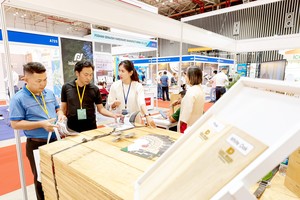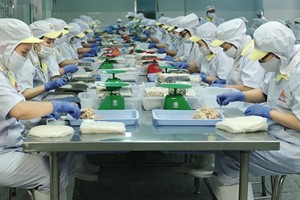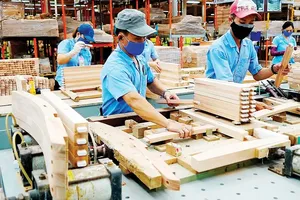
According to Ngo Ngoc Khanh of the Vietnam Logistics Association, severe congestion at Tan Cang-Cat Lai Port in HCMC, with a handling capacity of only 25 containers per day against an influx of 10,000 TEU/day (approximately 700 40-foot containers), is causing significant customs clearance delays, impeding import-export operations.
The Japanese Business Association further highlighted concerns about compromised cargo quality due to outdoor inspections, a problem prevalent beyond Cat Lai. Many customs sub-departments even lack dedicated inspection facilities.
In a recent formal discussions with businesses, Head Vuong Tuan Nam of the Management and Monitoring Division under the HCMC Customs Department explained that Cat Lai Port handles over 90 percent of the Southern region’s cargo, and its higher inspection rate (compared to the national average of 3.5-4.3 percent) is attributable to the predominance of commercial goods. He commented that these issues are not solely customs-related but also reflect long-term planning and investment shortfalls in export processing and industrial zones.
Outdated infrastructure is a persistent concern for businesses, especially those involved in international trade. Tran Anh Duc, representing the Investment and Trade Task Force of the Vietnam Business Forum Alliance, highlighted limitations in port and warehouse infrastructure and exorbitant logistics costs, which, at 25 percent of GDP, significantly exceed global averages.
Transportation costs alone account for 30-40 percent of product prices in Vietnam, compared to the global average of 10-12 percent. He emphasized that HCMC, despite being the nation’s economic powerhouse, suffers from inadequate infrastructure, with frequent congestion on access roads to Cat Lai Port and the Long Thanh-Dau Giay Expressway, as well as a serious lack of large-scale logistics centers. Investment in logistics, he argued, would enhance the value and competitiveness of Vietnamese exports, particularly agricultural products.
Businesses also cited specialized inspections as a major trade barrier, mentioning the sheer volume of goods requiring inspection, sometimes across multiple categories. The lack of standardized, codified lists of inspected goods creates ambiguity for regulatory bodies as well. Overlapping regulations and complex procedures further compound the issue.
For instance, despite recent exemptions for numerous medical items under the Ministry of Health’s Circular 15 (which aligns product codes with import-export classifications of Vietnam for food, food additives, and food containers, packaging materials in direct contact with food), some customs sub-departments still require separate confirmation from the health sector before granting clearance.
Discrepancies in regulatory interpretation between agencies also create difficulties. Vien Dat Co. in HCMC reported repeatedly mediating between agencies due to conflicting interpretations, resulting in delays of 10-20 days for customs clearance of the company’s merchandise. America Indochina Management Vietnam Co. Ltd. encountered problems with customs using outdated Harmonized System (HS) codes compared to applicable ones by the World Customs Organization.
VAT refunds for exporters also face significant hurdles. Vina Kyoei Steel Co. Ltd., a Japanese-invested company, submitted a VAT refund request in January 2023 for the period December 2021-November 2022 and underwent a pre-refund audit. However, after nearly 18 months, the audit concluded that the company was ineligible for a full refund of over VND88 billion (US$3.46 million) due to purchases from eight suppliers flagged as high-risk for tax and invoice irregularities, despite the company providing evidence of legitimate transactions.
Many other businesses report cash flow problems due to delayed refunds, often caused by tax authorities’ cautious supplier verification processes, especially affecting cassava starch exporters. Fococev Vietnam, for example, has VND529 billion ($20.8 million) in outstanding refunds over six years despite no evidence of fraudulent claims.
Ceramic exporters like Saigon PTS face unacceptably prolonged delays awaiting mineral content verification of 51 percent, dependent on tax settlements from its 20 suppliers.
The Vietnam International Arbitration Center (VIAC) emphasized the paramount importance of institutional and legal frameworks in attracting investment and promoting trade. Many sectors still face legal and procedural bottlenecks.
Dr. Nguyen Hai Minh (Central Economic Commission) argued that the legal and policy landscape should support revenue generation and facilitate business growth. It exists to ensure that business failures result from market competition, not institutional failings; and to provide officials with the legal certainty to support businesses without undue risk.
























